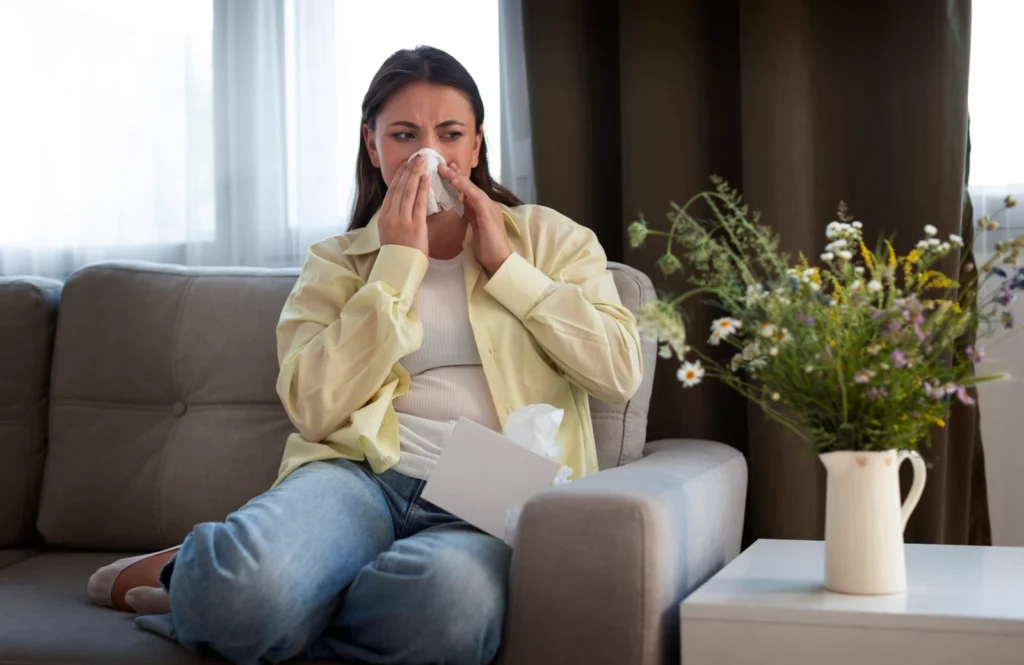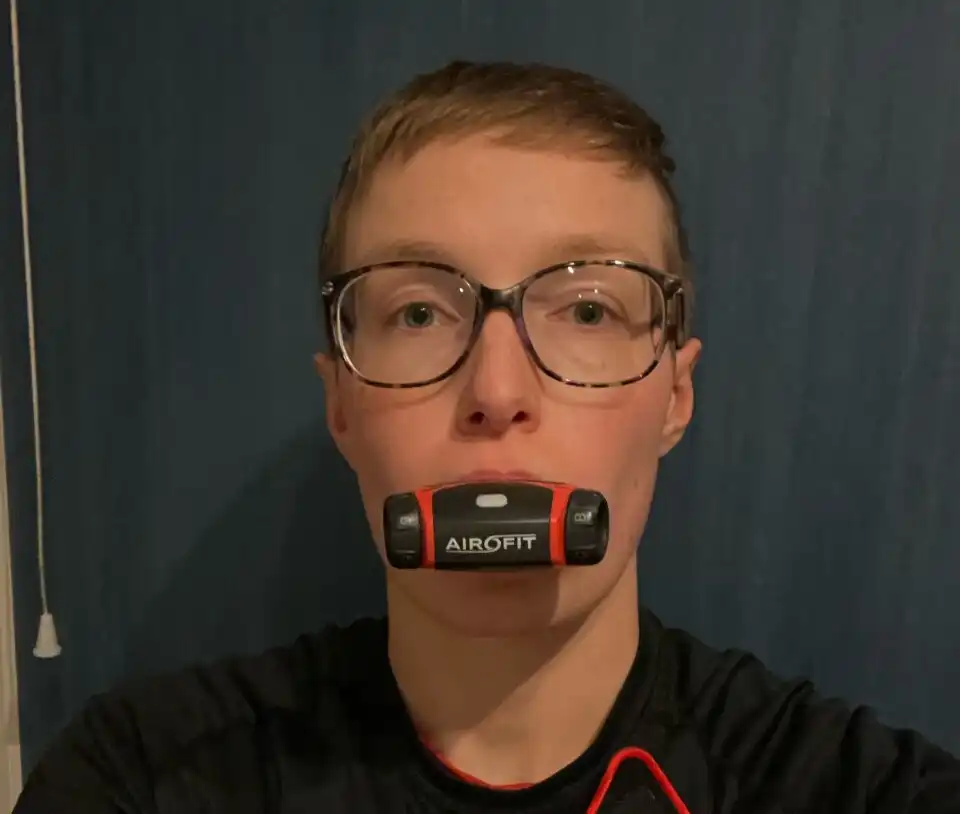Lung cancer and breathing techniques – what is the value of Inspiratory muscle training?

While the Airofit breathing trainer might assist with respiratory issues, Airofit is not a medical device nor made for treating illness.
World Lung Cancer Day is marked each year on August 1. It’s a significant date for millions of people around the world, as Lung cancer continues to be one of the most common cancers, claiming more lives annually than breast, colon and prostate cancers combined. It is estimated that lung cancer accounts for nearly one in five of all cancer deaths globally.
Lung cancer is the 2nd most common cancer worldwide. It is the most common cancer in men and the 2nd most common cancer in women. There were more than 2.2 million new cases of lung cancer in 2020.
Cancer develops when cells grow out of control. Lung cancer begins in the lungs and can spread to the lymph nodes and elsewhere in the body, a process known as metastasis. Lung cancer is often diagnosed late and is difficult to treat.
What causes lung cancer?
Smoking is the main cause of lung cancer. It is estimated that over 90% of cases among men and over 80% among women worldwide are attributable to tobacco use. Passive smoking is also a major cause.
There is evidence that the following are also associated with an increased risk of lung cancer: previous lung disease, occupational exposure and indoor air pollution. Drinking water polluted with arsenic is another risk factor.
In current and former smokers, taking high-dose beta-carotene supplements may also raise the risk of lung cancer.
There is also evidence that consuming red meat, processed meat and alcoholic drinks might increase your risk of developing lung cancer.
Reducing the risk – what can you do?
Current research In smokers and former smokers suggests the following measures may reduce the risk of developing lung cancer:
- Eating a diet rich in vegetables and fruit
- Consuming foods containing retinol & beta-carotene
- In current smokers, consuming foods containing vitamin C
- In people who have never smoked, consuming foods containing isoflavones (constituent of plants with oestrogen-like properties)
- Being physically active
Breathing training – IMT in healthcare
Respiratory muscle training (RMT) is often referred to as inspiratory muscle training (IMT) in medical studies.
To clarify and avoid any confusion, respiratory muscle training (RMT) is the umbrella term for training the breathing muscles, both inspiratory and expiratory (in breath and out breath).
Inspiratory muscle training (IMT) focusing solely on the in-breath is generally the technique most used in medical studies, but we tend to use the terms RMT & IMT interchangeably when discussing breathing training.
Respiratory muscle training has been widely studied in a wide range of applications with lung conditions such as asthma, COPD, MS and, most recently, with treating long covid symptoms.
As a therapy in these cases, IMT has been very successful in improving the quality of life and boosting lung function, activity levels and overall well-being.
Life after lung cancer – Jamie Juliano’s inspiring story
Jamie works as a nurse / paramedic with Medivac. At 31 she was diagnosed with a lung tumor and had a complete removal of the affected lung. Jamie, an American who describes herself as a ‘stubborn lady’, was not going to let this setback stop her from pursuing her dreams.
She had tried some yoga and breathwork techniques, and found they complemented her regular training sessions with Airofit. Having developed an interest in freediving through providing medical support in competitions, Jamie set herself the challenge to build up her remaining lung capacity and try freediving for herself.
With regular breath training, she not only regained her former breath-hold capacity, but she also exceeded it, managing a remarkable 2.5 minutes, with just one lung! Although not able to compete with the elite free divers, she is thrilled to participate in this challenging sport.
Jamie’s inspiring message for anyone affected by lung cancer, or any other major setback is a simple one:
“Stay positive, you will have good days and bad. But live your life, don’t put things off. If you have a goal, never give up!”
Watch Jamie’s inspiring life story here:
The evidence for RMT in lung cancer treatment
There have been a number of studies on the benefits of breathing training both pre and post operatively. The results are promising, with many patients finding significant improvements using IMT.
These are a few of the findings from IMT cancer research projects around the world.
“A six weeks of inspiratory muscle training (IMT) and aerobic exercise had improved respiratory muscle strength and aerobic exercise postoperatively in lung cancer patients after VATS (surgery) as early as 2 weeks.” 1
“This study found that IMT (inspiratory muscle training) load significantly improved MIP (maximum inspiratory pressure) and dyspnea at rest and on exertion in patients with advanced lung cancer. In addition, the effects of IMT load were observed relatively early. The findings indicate that IMT is useful and has a high persistence rate in patients with advanced lung cancer who exhibit dyspnea (breathlessness) and cannot perform high-intensity exercise therapy. 2
“IMT associated with physical exercise in the preoperative period of pulmonary resection (lung surgery) improves functional capacity and reduces the length of hospital stay in the postoperative period.” 3
Declining rates of lung cancer
With lung cancer rates around the world dropping, and smoking in many countries also declining, there is some cause for hope. But there are still around 1 billion tobacco users globally, so there is still a long way to go.
Poor air quality, another major risk factor, also varies widely, with huge improvements made in many countries. But again, with high levels of pollution from traffic, industry, wood burning stoves and other sources, air quality in some regions will remain a major target for improving future cancer rates and reducing the burden of respiratory illness.
Socio-economic factors will of course also play a major part, as people from the lowest income groups and countries are at higher risk for developing lung cancer and have less access to high quality healthcare.
New treatments – the search for a cure
There are exciting new drug treatments that target a tumor’s ability to grow and spread. Other drugs are designed to help the body’s immune system recognize and destroy cancer cells. These, and other new drugs and therapies will no-doubt save millions of lives in the years to come.
The battle against lung cancer will continue, but there is certainly some reason for optimism. Globally there are considerable resources being poured into research and, as we gain ever deeper understanding of the mechanisms underlying this disease, we can look forward to a day when it is both highly preventable and easily treatable.
Links
- https://pubmed.ncbi.nlm.nih.gov/33307766/#:~:text=Conclusion%3A%20A%20six%20weeks%20of,as%20early%20as%202%20weeks
- https://assets.researchsquare.com/files/rs-915581/v1/d637261d-ddef-4f78-82c1-e46d12376526.pdf?c=1638934470
- https://pubmed.ncbi.nlm.nih.gov/34417883/




